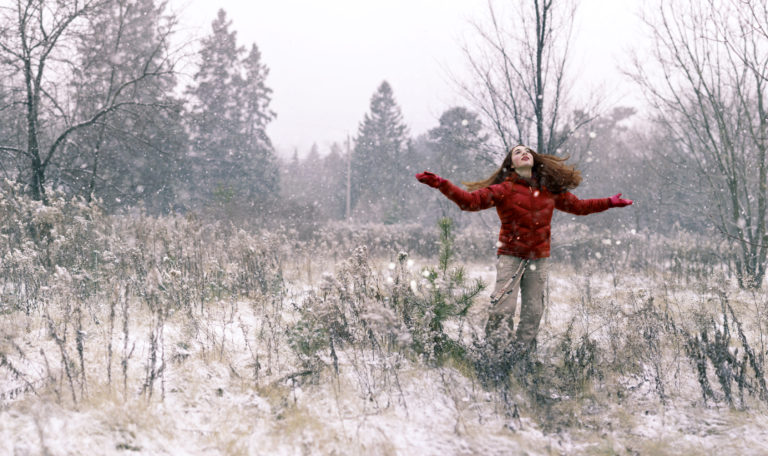
Image by Jeff Stanford/Flickr, Attribution-NonCommercial-NoDerivs.
The Sensory Astonishment of Gratitude
In this season of Thanksgiving, you’ve no doubt been reminded that expressing gratitude, or even just thinking gracious thoughts, is a direct route to a more satisfied life. As Arthur C. Brooks wrote in last week’s New York Times:
“We are more than slaves to our feelings, circumstances and genes. Evidence suggests that we can actively choose to practice gratitude — and that doing so raises our happiness.”
I’m not terribly interested in happiness, truth be told, or at least not the hollow version of it that is too often peddled as the goal. To me the goal is closer to meaning and pleasure, integrity and humility. Happiness, in contrast, seems like that yoga teacher who is convinced that she is super spiritual when, in fact, she’s just read the right books; she keeps telling you to contort your body into strange shapes while urging you to smile as you shake with the strangeness of it all.
Nevertheless, I’m a huge fan of gratitude. It connects me so deeply to other people. I feel the physical sensation of my shoulders lightening and my head clearing when I write a thank you note. It’s almost like I’m in the same room as the person to whom I’ve addressed the letter. I can feel their physical presence and they’re in a great mood. I feel better about myself having written it. I’m who I want to be, someone who pauses long enough in a busy life to put pen to paper, to scrounge up a stamp, to pop a 2D expression of a 3D love in the mail.
When I think grateful thoughts about a thing, not a person, there’s a similar phenomenon. I have an immediate, visceral sense that this thing — the gorgeous guts of a pomegranate or the thousands tiny scratches in my thick silver ring — becomes instantaneously more valuable, like fine art. My gratitude makes the thing show off, get brighter and more detailed, flare and flash. I think, “How have I not noticed how totally beautiful and intricate this thing is?”
I am reminded, in these moments, of a time when a friend of mine — tripping on acid — looked up at the full moon blazing against the dark sky, uninhibited by city lights, and shouted: “I had nothing to do with that! Keep shining, moon! Just keep shining!”

His astonishment was, yes, a product of drugs and maybe a hint of narcissism, but it was mostly the enlargement of this wonderful thing that happens when humans actually pay attention and feel the full capacity of our gratitude. We realize that the world’s beauty is unfathomably vast — and that it has nothing to do with us. It’s enough to make even a sober person shout into the darkness.
I feel especially high on this realization when I think about the functioning of my own body. As the moon keeps shining, our lungs keep breathing, our blood keeps pumping, our brains keep firing. Until they don’t, which of course only makes us even more aware of how miraculous it is that they normally do. About 100 million new red blood cells are being formed in our body every minute! The liver, meanwhile, takes toxic substances and converts them into harmless ones, or makes sure they are released from the body. It’s doing that right now, as you read this column, as you eat your pumpkin pie, as you grow frustrated with your racist uncle.
Nothing will make you bow down to the human body more than learning about pregnancy. Pregnant women’s bodies actually build a whole new organ — the reddish-blue placenta, which is like the control center for baby life. My midwife used to measure my growing belly (technically called “fundal height”) and explain to me that ancient cultures figured out your belly is exactly the number of centimeters that you are weeks pregnant. That’s better than science fiction.
Which is all to say, gratitude is not just about empty platitudes or forced dinner table exercises. It’s about marveling. It’s about witnessing people and telling them that you do. It’s about natural science and human anatomy. It requires, above all else, slowing down and noticing and letting yourself be astonished.
So keep shining, moon. Just keep shining.


